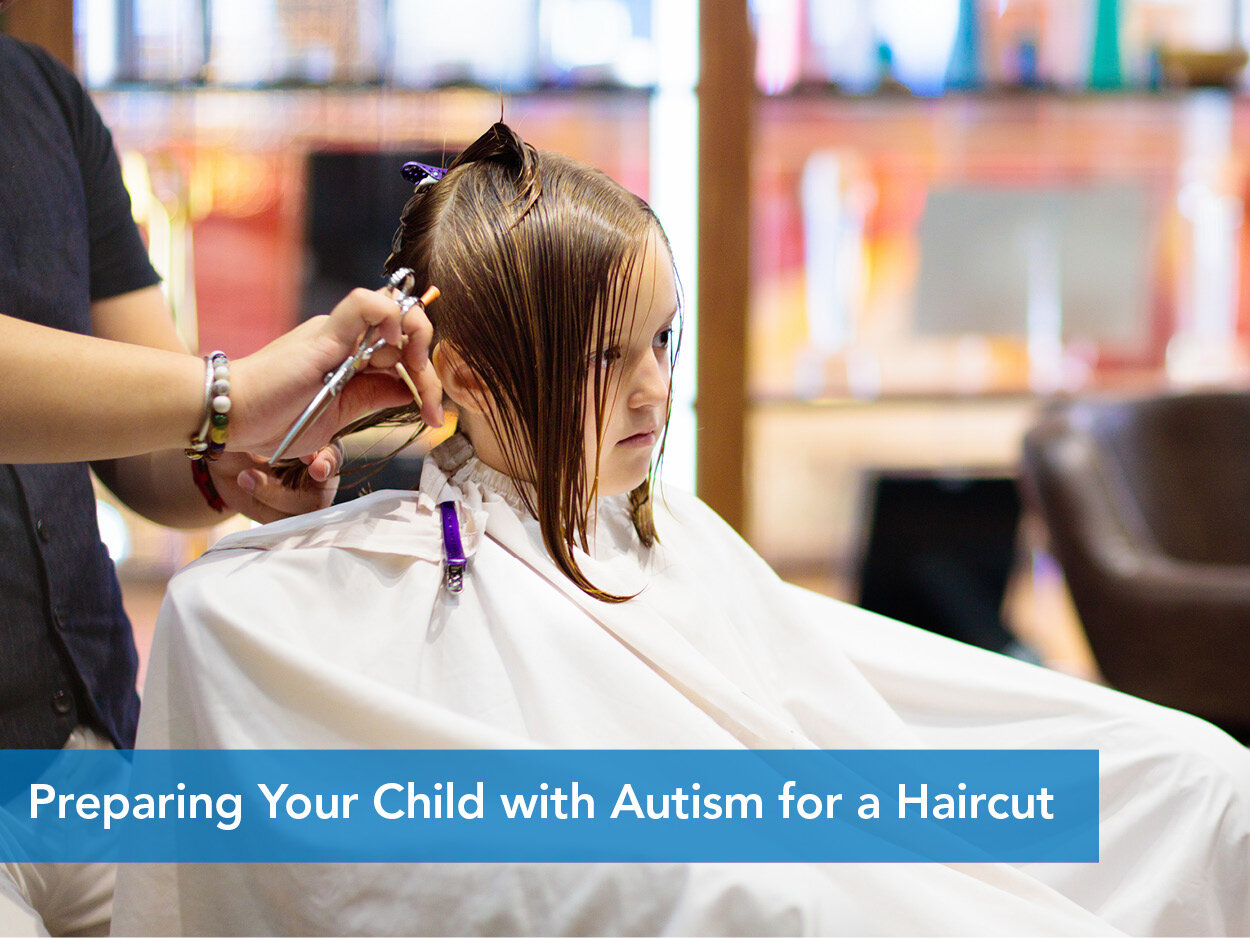Preparing Your Child with Autism for a Haircut
Preparing your child for novel or new situations can be both exciting and daunting. This is especially true with a child who has Autism Spectrum Disorder or who struggles with sensory issues. Often, new routines or activities can be overwhelming and can potentially lead to a variety of problem behaviors, so it is important to be prepared and have a plan. Here are some tips and strategies for making the haircut process easier for them and for you.
The most important thing is to make a plan for success. Planning and preparation can help to ease the stress on both you and your child, which in turn can make the whole process a lot easier.
To begin the process, you will want to explain to your child what to expect from the haircutting process. Depending on their age and ability level, this explanation can take a few different forms. For some children, reading books on getting a haircut can be helpful. For other children, acting out the process of getting a haircut with figurines or dolls can be a great step in reducing haircut anxiety. Act out the steps in the process of getting a haircut. You can begin by acting it out yourself, and then having the child imitate you, or you can roleplay the whole process. Some of the steps you might want to work on are:
Walking into the salon or barber
Sitting in the chair
Having a smock or apron placed around them
Having water sprayed on their head
Having their hair combed
Having their hair buzzed or trimmed. If it’s likely that a trimmer will be used, you can practice by putting a buzzing or vibrating device on their neck to get the child familiar with the sound and feeling.
Some salons and locations are very kid-friendly and will let you do a practice run before the haircut. That way your child can become familiar with the setting, sitting in the chair, being elevated, and turned in different directions. Also, if the salon or barber requires mask be worn, make sure to practice wearing a mask if your child is unfamiliar with doing so.
On the big day, make sure to explain what is going to happen and come up with some treats or rewards your child can earn for doing a good job during the entire process. Be sure to reinforce positive behavior throughout the experience.
By following these steps and preparing your child in advance, you can help your child adjust more easily to an uncomfortable situation and avoid tantrums!
Carrine Pilkington M.S., BCBA, LMFT
Regional Clinical Director
Tuesday, February 9, 2021

